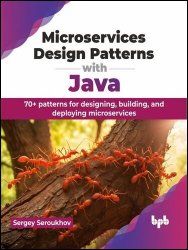 Название: Linux Mastery: 100+ Exercises for Building Your Skills
Название: Linux Mastery: 100+ Exercises for Building Your SkillsАвтор: Frank Anemaet
Издательство: Leanpub
Год: 2023-02-05
Язык: английский
Формат: pdf (true), mobi, epub
Размер: 10.2 MB
Unlock the full potential of Linux with hands-on exercises designed to improve your skills and knowledge in this powerful operating system.
Take your Linux skills to the next level with this comprehensive guidebook. Filled with hands-on exercises and real-world examples, this book will help you understand the intricacies of the Linux operating system and give you the confidence to tackle any task. Whether you're a beginner or an experienced user, you'll find the knowledge and skills you need to master Linux and unlock its full potential. So why wait? Start your Linux journey today with this essential guidebook.
Linux-based operating systems have been around for over 30 years. Although it may not be as well-known as its proprietary counterparts, such as Microsoft Windows or Apple’s macOS, Linux is actually much more prevalent than you might think. In fact, it powers many of the devices that you use on a daily basis, from smartphones to servers to supercomputers.
One of the key benefits of Linux is its open-source nature. This means that anyone can access and modify the source code, making it a highly customizable and flexible operating system. This has led to a vast array of different distributions (or “distros”) of Linux, each tailored to specific needs and uses. For example, there are distros for developers, for desktop users, for gaming, and for enterprise-level servers.
Another benefit of Linux is its stability and security. Because the source code is open and constantly being improved upon by a large community of developers, bugs and vulnerabilities are often found and fixed quickly. Additionally, Linux is less susceptible to malware and viruses compared to other operating systems, making it a popular choice for secure and sensitive applications.
Despite its many advantages, Linux is not without its challenges. One of the main obstacles for new users is the command-line interface, which can be intimidating for those who are used to a graphical user interface (GUI). However, once users become familiar with the command line, they often find it to be a powerful and efficient tool for managing their devices and applications.
Contents:
Скачать Linux Mastery : 100+ Exercises for Building Your Skills
[related-news] [/related-news]
Комментарии 0
Комментариев пока нет. Стань первым!
















